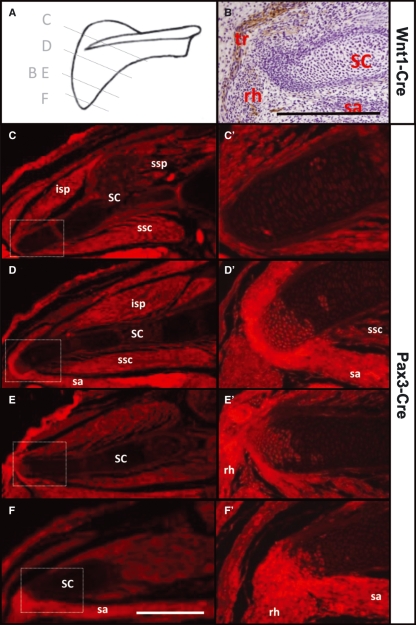Fig. 1.
Somitic derivatives in the shoulder region. (A) Sectioning planes in B–E through a scheme of the scapula. (B) Transverse cryosection of the shoulder region of a 13.5 dpc Wnt1-Cre/R26R-LacZ mouse embryo shows the absence of neural crest derivatives in the medial scapular cartilage, whereas they are present in adjacent nerves and connective tissue of the trapezius muscle. Therefore, the Pax3-Cre activity in the scapular cartilage is due to somitic cells and not due to neural crest cells. (C–F) Transverse paraffin sections through the shoulder region of 15.5 dpc Pax3-Cre/R26R-YFP mouse embryo stained with anti-GFP/AlexaFluor 594. Insets are shown at higher magnification in C′–F′ and demonstrate the cranio-caudally increasing contribution of YFP-positive cells to the medial/vertebral (dorsal-most) scapular border. The medial girdle muscles attaching to the medial margin of the scapula are more strongly YFP-positive than other muscles, suggesting that their connective tissue is also somitic in origin. Ossifying regions of scapular cartilage seem falsely positive (spina scapulae in C, centre of scapula in D). Scale bar, 1 mm. Orientation: dorsal to the left, left side to the top. SC, scapula; isp, infraspinatus; ssp, supraspinatus; ssc, subscapularis; sa, serratus anterior; rh, rhomboid major; tr, trapezius muscles.

